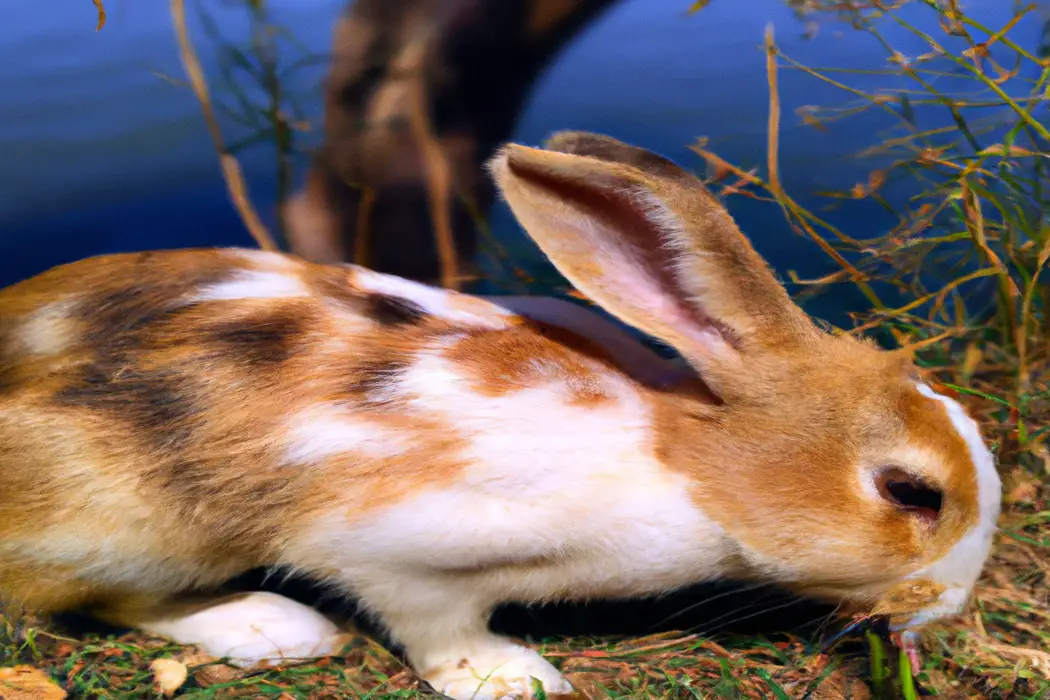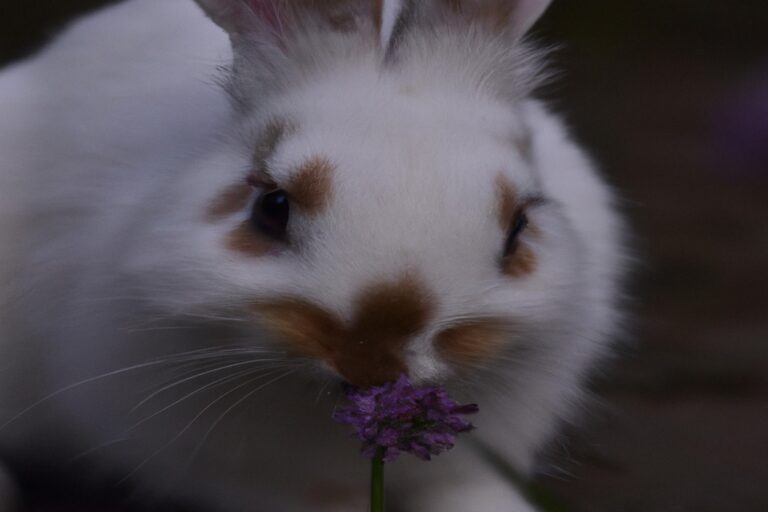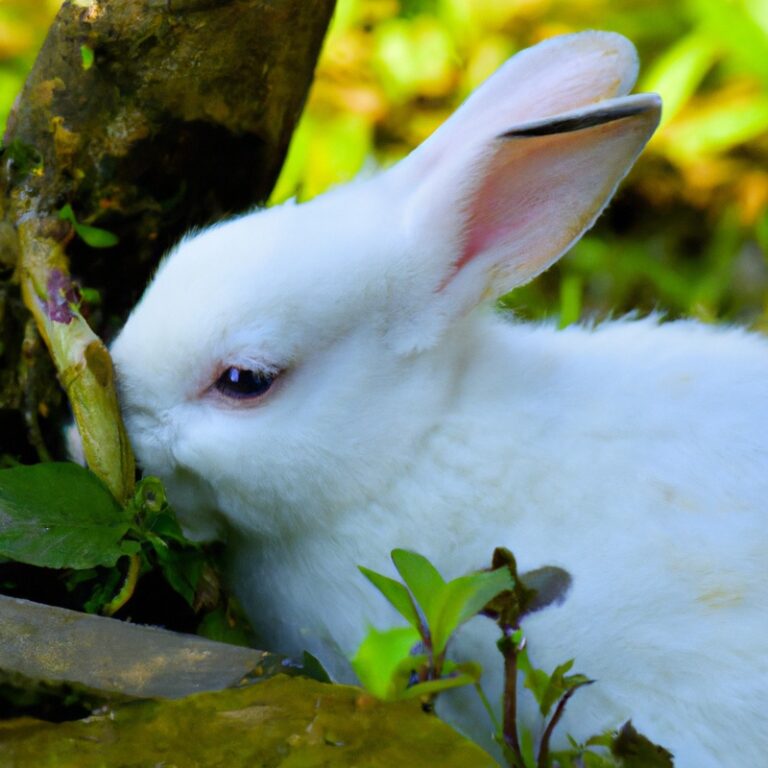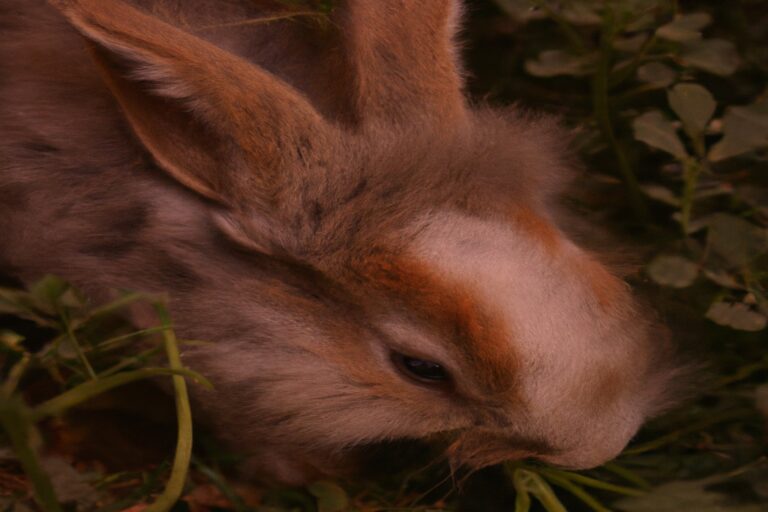What Temperature Is Too Cold For Baby Rabbits – Expert Tips!
Key Takeaways:
- Baby rabbits cannot tolerate temperatures below 50°F (10°C) for extended periods.
- Extremely cold temperatures can lead to hypothermia and even death in baby rabbits.
- Providing appropriate shelter and warmth is crucial to protect baby rabbits from cold weather.
- Monitoring the temperature and taking preventive measures can help ensure the well-being of baby rabbits in cold conditions.
Hey there! Are you wondering how cold is too cold for your adorable baby rabbits?
Well, you’ve come to the right place! As a rabbit expert, I’m here to shed some light on the ideal temperature range for these tiny furballs.
In this article, we’ll explore the recommended temperatures for baby rabbits at different stages of their development.
We’ll also discuss the signs that indicate they’re too cold, and most importantly, how to keep them warm and cozy.
So, let’s hop right in and ensure your little bunnies stay snug as a bug in a rug!
| Age of Baby Rabbit (in weeks) | Temperature Range (in degrees Celsius) | Effect of Cold Temperature |
|---|---|---|
| Less than 1 week | 35°C – 37.5°C | No feathers, cannot regulate body temperature. Can develop hypothermia and die if exposed to temperatures below 20°C. |
| 1 – 2 weeks | 32°C – 34.5°C | Starts growing fur, but still requires supplemental heat. Can develop hypothermia and die if exposed to temperatures below 15°C. |
| 2 – 4 weeks | 30°C – 32.5°C | Continues growing fur, but still needs warmth. Can develop hypothermia and die if exposed to temperatures below 10°C. |
| 4 – 6 weeks | 27°C – 30°C | Fur fully grown, but still sensitive to cold temperatures. Provide shelter and avoid temperatures below 5°C. |
| 6 weeks and older | 20°C – 25°C | Can tolerate lower temperatures, but still provide a draft-free shelter and avoid extreme cold below 0°C. |
Ideal temperature range for baby rabbits
The ideal temperature range for baby rabbits depends on their age, with warmer temperatures needed for newborns and gradually decreasing as they grow older.
Recommended temperature for baby rabbits in the first week
During their first week of life, baby rabbits need to be kept in a warm environment to ensure their wellbeing.
The recommended temperature for baby rabbits in their first week is around 85-90°F (29-32°C).
This temperature range helps to mimic the natural warmth provided by the mother rabbit.
It is important to maintain this temperature consistently to keep the baby rabbits comfortable and prevent them from getting too cold.
Providing a heat source, such as a heat lamp or heating pad, can help to maintain the ideal temperature for their first week of life.
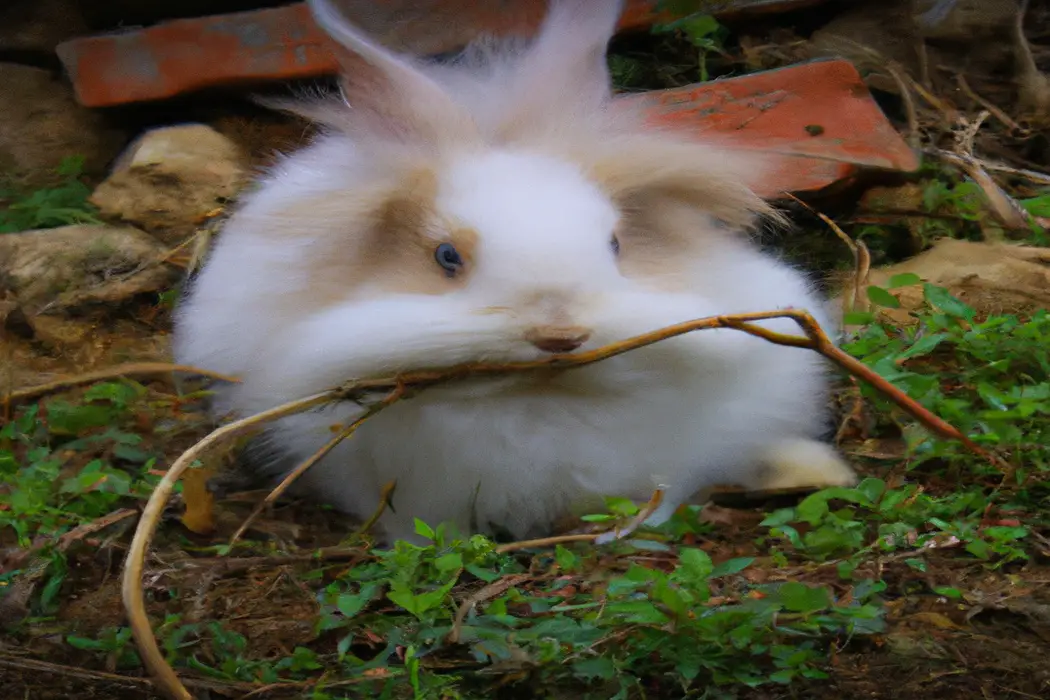
Recommended temperature for baby rabbits from 1 to 2 weeks old
During the first two weeks of their lives, it’s important to keep baby rabbits in a warm and comfortable environment. The recommended temperature for baby rabbits from 1 to 2 weeks old is around 85 to 90 degrees Fahrenheit (29 to 32 degrees Celsius).
This helps to mimic the warmth they would receive from their mother.
You can achieve this temperature by using heat lamps or heating pads in their nesting area. It’s crucial to monitor the temperature closely and make adjustments as needed to ensure the well-being of the baby rabbits.
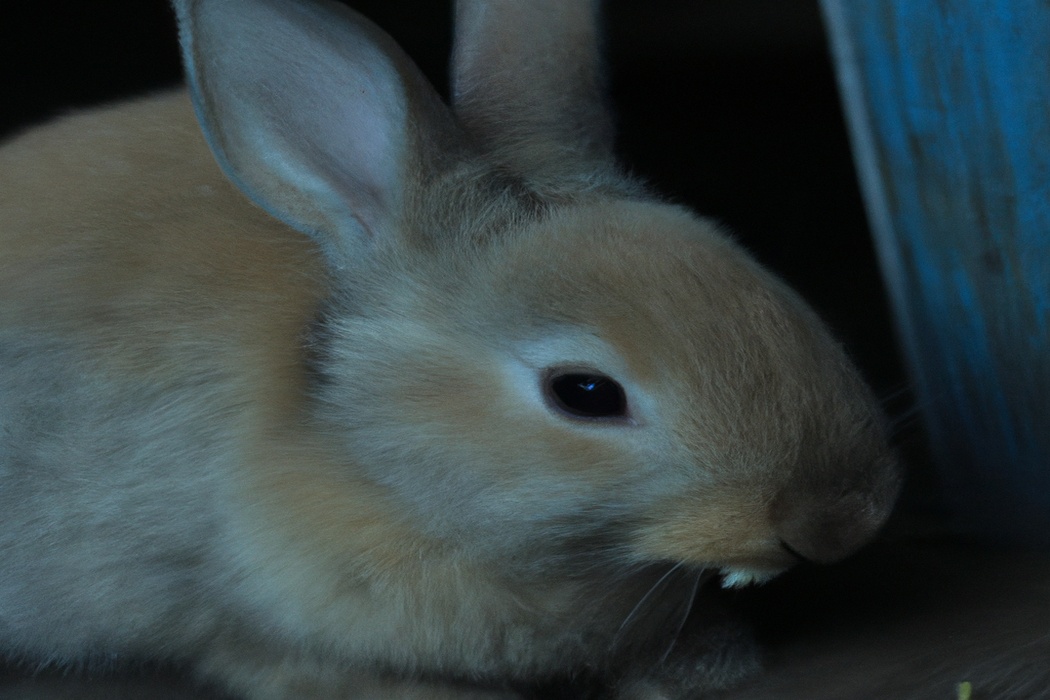
Recommended temperature for baby rabbits from 2 to 3 weeks old
During the sensitive stage of 2 to 3 weeks old, baby rabbits need a warm and cozy environment to thrive. The recommended temperature range for them is between 70 to 80 degrees Fahrenheit (21 to 27 degrees Celsius).
This ensures their comfort and promotes healthy growth.
To maintain the ideal temperature, you can use a heating pad or lamp, but make sure to keep it at a safe distance and provide enough space for the rabbits to move away if they feel too warm. Additionally, you can use nesting material to provide additional insulation for them.
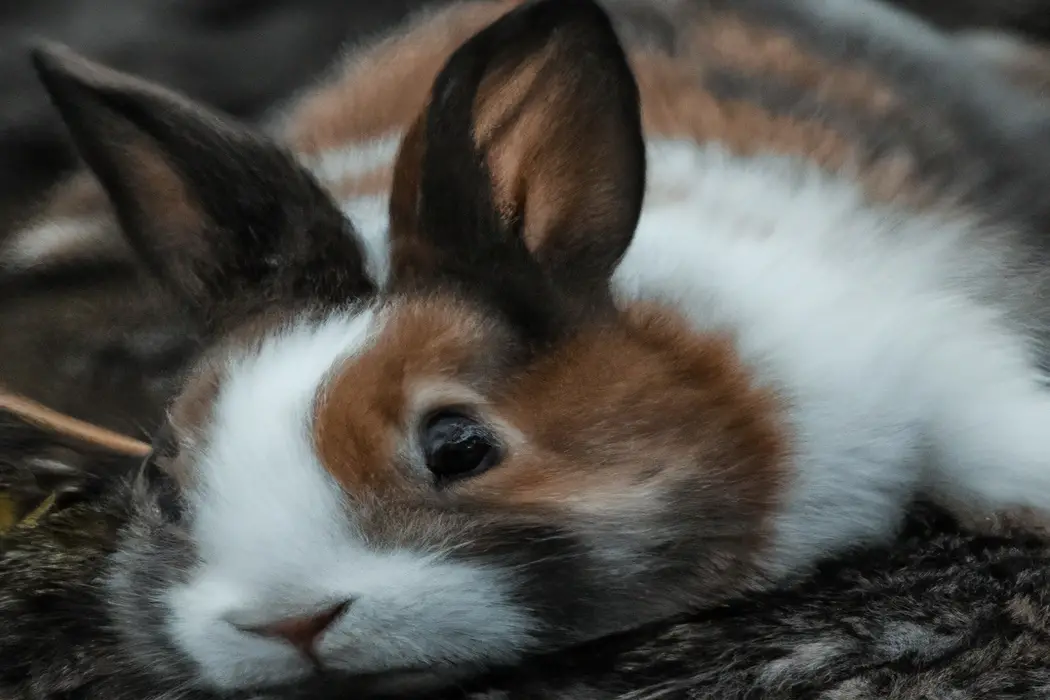
Recommended temperature for baby rabbits from 3 to 4 weeks old
During the crucial developmental period of 3 to 4 weeks, baby rabbits need a warm and comfortable environment to thrive.
As an expert, I recommend maintaining a temperature range of 75 to 80 degrees Fahrenheit (24 to 27 degrees Celsius).
This ensures that the baby rabbits stay cozy and avoid any risk of chilling.
You can achieve this by using a heat lamp or a heating pad placed in their enclosure.
Monitoring the temperature regularly and adjusting accordingly is important to keep these little ones happy and healthy as they continue to grow.
Signs of baby rabbits being too cold
Behavioral changes in baby rabbits when they are too cold include huddling together, shivering, and reduced activity levels.
Behavioral changes in baby rabbits when they are too cold
When baby rabbits are too cold, they may exhibit several behavioral changes. They might huddle together with their littermates or seek shelter in a warm spot.
They may also become less active and show signs of shivering or trembling.
Additionally, you might notice a decrease in their appetite or they may appear lethargic. These behavioral changes are their way of trying to stay warm and conserve energy.
If you notice these signs, it’s important to provide them with a warm and cozy environment to prevent any health issues.
Physical indications of cold stress in baby rabbits
The physical indications of cold stress in baby rabbits can include shivering, huddling together, and seeking out warm areas.
They may also show signs of lethargy, decreased activity, and loss of appetite.
Cold stress can also lead to pale or bluish extremities, such as ears and nose.
Observing these signs is important for addressing their welfare and wellbeing, as baby rabbits are more susceptible to cold temperatures.
It’s crucial to provide them with a warm and comfortable environment to prevent cold stress.
Adverse effects of prolonged exposure to cold temperatures
Prolonged exposure to cold temperatures can have adverse effects on baby rabbits.
It can lead to hypothermia, which is when their body temperature drops too low.
This can weaken their immune system, making them more susceptible to illnesses and infections.
The cold can also cause their metabolism to slow down, leading to weight loss and stunted growth.
In severe cases, it can even be fatal.
Therefore, it is important to keep baby rabbits warm and provide them with a sheltered and insulated environment.
How to keep baby rabbits warm
To keep baby rabbits warm, provide a suitable nesting area and use heat sources to regulate the temperature. Monitor and adjust as needed, especially in outdoor housing in cold climates.
Using heat sources to regulate temperature for baby rabbits
To regulate the temperature for baby rabbits, you can use heat sources.
One option is a heat lamp, which can be placed above the babies’ nest to provide warmth.
Make sure to use a thermometer to monitor the temperature and ensure it stays between 85-90°F.
Another option is a heating pad placed underneath part of the nest, allowing the kits to move closer or farther away depending on their needs.
Always ensure the heat source is secure and cannot harm the rabbits.
Monitoring and adjusting the temperature as needed
To ensure the well-being of baby rabbits, it is important to monitor and adjust their temperature as needed.
Keeping an eye on their environment is crucial to prevent them from getting too cold or too hot.
A consistent temperature between 65-75°F (18-24°C) is ideal.
Use a thermometer to regularly check the temperature in their enclosure.
Adjust the temperature by providing additional warmth if it is too cold or increasing ventilation if it is too hot.
Remember to observe their behavior and physical cues to ensure their comfort.
Recommendations for outdoor housing in cold climates
To keep your baby rabbits warm in cold climates, there are a few recommendations for outdoor housing you should keep in mind:
- Choose a suitable shelter: Make sure the housing for your baby rabbits has insulation and is well-protected from drafts. A small wooden hutch with insulated walls and a raised floor can provide the necessary warmth.
- Provide bedding: Line the hutch with plenty of soft, warm bedding material like straw or hay. This will help create a cozy environment for your baby rabbits.
- Use heat sources cautiously: While it’s important to keep your rabbits warm, avoid using heat lamps or electric heating pads directly in their housing. These can be a fire hazard and pose a risk of burns or overheating. Instead, consider using heat mats placed underneath the hutch or heating bottles wrapped in towels.
- Protect against moisture: Cold climates often come with dampness, so it’s crucial to ensure that the hutch remains dry. Regularly check for any leaks or signs of condensation and promptly address them.
Frequently Asked Questions
What is the minimum temperature that baby rabbits can tolerate?
Baby rabbits can tolerate temperatures as low as 50 degrees Fahrenheit (10 degrees Celsius).
However, it is important to provide them with adequate shelter, bedding, and warmth to ensure their well-being.
To protect them from the cold, you can use heat lamps, blankets, or even bring them indoors during extreme bouts of cold weather.
Additionally, monitoring their behavior and ensuring they have access to fresh water and nutritious food is crucial in maintaining their health during colder temperatures.
Can baby rabbits be kept outdoors during cold weather?
Yes, baby rabbits can be kept outdoors during cold weather, but there are some important considerations.
Baby rabbits are more sensitive to extreme temperatures, so you need to ensure that they have a warm and sheltered area.
Provide a well-insulated hutch with straw bedding and access to a safe enclosed area for exercise.
Monitor their condition closely and make sure there are no drafts, as this can cause health issues.
It’s also crucial to check weather forecasts and bring them indoors or provide additional heating if the weather becomes too severe.
How can I tell if my baby rabbits are too cold?
To determine if your baby rabbits are too cold, pay attention to their behavior and physical indicators. If they are huddled together, shivering, or showing signs of lethargy, they may be too cold.
Check their body temperature by feeling their ears or belly – if they feel cold to the touch, it’s a sign they need warmth.
Providing a heat source, such as a heating pad or heat lamp, can help keep them comfortable. Make sure the temperature in their environment is appropriate for young rabbits, between 65-75°F (18-24°C).
Are there any risks of overheating baby rabbits with supplemental heat sources?
Yes, there are risks of overheating baby rabbits with supplemental heat sources.
Baby rabbits are extremely sensitive to temperature changes, and overheating can be dangerous for them.
It can lead to heat stress, dehydration, and even death.
It’s important to monitor the temperature and avoid using heat sources that can raise the temperature excessively.
Providing a comfortable and appropriate temperature for baby rabbits is crucial for their well-being.
Final Verdict
Maintaining the ideal temperature range is crucial for the health and well-being of baby rabbits.
During the first week, a temperature of around 85-90°F (29-32°C) is recommended, gradually reducing to around 65-70°F (18-21°C) by the fourth week.
Signs of baby rabbits being too cold include behavioral changes and physical indications of cold stress.
To keep them warm, provide a suitable nesting area, use heat sources like heat lamps or heating pads, and closely monitor and adjust the temperature as needed.
For outdoor housing in cold climates, additional precautions and insulation are necessary.
It is always important to prioritize the well-being and comfort of the baby rabbits, ensuring they are not subjected to extreme cold temperatures.

